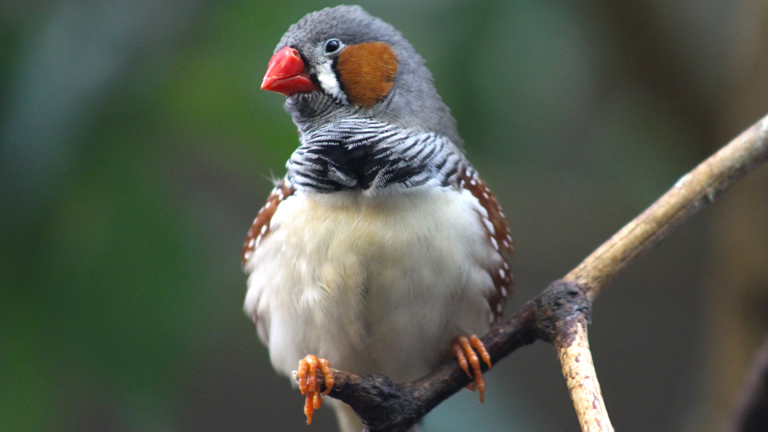
Twittering:When Zebra finches hear love songs
What happens in the brain of zebra finches when they choose their mating partner.
Humans select their partners based on a wide variety of factors; their looks, how much money they have on the bank, or a funny personality. For songbirds, it is all about songs. Despite its crucial role in mate choice, little is known about the neurobiological mechanisms underlying the accurate interpretation of courtship song in females. Using a combination of functional resonance imaging (fMRI), immediate early gene expression, and behavioural tests, a group of scientists from Antwerp, Montreal, and Bochum aimed to identify the circuitry involved in the evaluation of mating songs in the zebra finch (Taeniopygia guttata).
Females were exposed to either the longer, faster, and more stereotyped courtship song or a neutral song, and this revealed two brain regions, the Mesopallium caudomediale (CMM) and the Nidopallium caudocentrale (NCC), that specifically become active when listening to the mating song. The CMM is a well-known auditory area sensitive to differences in tempo. Since a fast pace is a hallmark of the male courtship song, this was not a very surprising result.
More surprising was the activation of the NCC, a ‘hub’ area in the limbic forebrain. This area integrates complex auditory information with sexual imprinting memory of what is desirable of a song. Moreover, the NCC projects to the arcopallium, which is important for coordinating movement. Thus, the NCC is well suited to evaluate the attractiveness of a song and in response coordinate courtship behaviour; like calling back to a desirable mate. This study is the first to show the important role of limbic pathways in the evaluation of courtship song and ultimately mate choice of female zebra finches.
